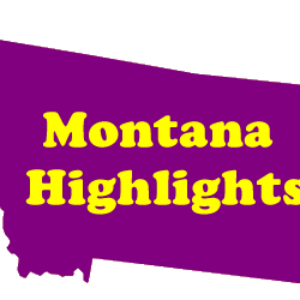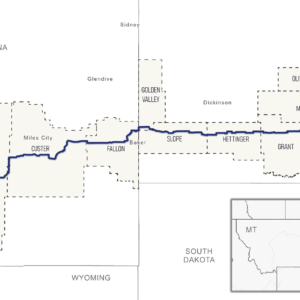Windshield Hero, 300 S 24th St W, (701) 390-6086, Chalifoux, Barry – Windshield Hero, Service, Billings
Archie Cochrane Motors Inc, 1313 12th St W, (406) 656-1100, Cichosz (Manager), Scott – Archie Cochrane Motors Inc, Auto Business, Billings
Initial Bee, 1280 Pumori Circle, (406) 850-8756, Blankenship, Laura – Initial Bee, Service, Billings
Solid Ground Solutions LLC, 915 2nd Ave, (406) 633-3052, Gray, Levi – Solid Ground Solutions LLC, Service, Laurel Mt
Global Mountain Solutions USA, 1239 Jackpine Ave Ste 110, (778) 897-2078, Santos (Manager), Poliana – Global Mountain Solutions USA, General Contractors, Redmond, Or,
Pour To Ridge, 205 4th St Sw, (406) 647-4694, Spainhower, Josh – Pour To Ridge, General Contractors, Park City Mt, 59063
Specialty Distribution Group LLC, 7015 Trade Center Ave, (386) 304-2222, Specialty Distribution Group LLC, – Specialty Distribution Group LLC, Distributors, Billings
Behavioral Health Solutions LLC, 1415 Yellowstone River Rd, (833) 719-0886, Kovacs, Kristina – Behavioral Health Solutions LLC, Service, Billings
City Of Billings Streets/Traffic, 4848 Midland Rd, (406) 657-8264, Ness, Steve – City Of Billings Streets/Traffic, Electrical Contractors, Billings
Lace Property LLC, 3118 Forsythia Blvd, (925) 214-2569, Pierce, Lacey D – Lace Property LLC, Service, Billings
Keep’n It Neat, 224 S 36th St, (406) 598-8291, Stephanie, Abrahams – Keep’n It Neat, Service, Billings
Green Energy Champions, 1734 Avenue D, (406) 200-2972, Doran, Patrick N – Green Energy Champions, Service, Billings
Lisa Joy Cleaning Service, 86 W Antelope Trail Unit 2, (406) 855-1473, Watterud, Lisa – Lisa Joy Cleaning Service, Service, Billings
Safety-Kleen Systems, Inc, 1560 Coulson Rd, (781) 792-5000, Dowsett, Brett – Safety-Kleen Systems, Inc, Retail Sales, Billings
First North Consulting LLC, 3950 Bitterroot Dr, (406) 860-8741, Morrell, Daniel – First North Consulting LLC, Service, Billings
Bodfe, 27 Monroe St, (406) 794-9736, Akred, Maegan – Bodfe, Retail Sales, Billings
406 Trading Empire LLC, 4453 Loma Vista Dr, (406) 860-1362, Smith, Dakota – 406 Trading Empire LLC, General Contractors, Billings
Brice From Maintenance, 424 S 34th St, (406) 696-9436, Lagreca, Brice – Brice From Maintenance, Service, Billings
Charter Real Estate Company, 1148 16th St W Ste 16, (406) 698-8203, Charter, Boyd – Charter Real Estate Company, Real Estate Rental, Billings
Transcendence Behavior Health, 201 N Broadway Ste 110c, (813) 279-1082, Tran, Johnny – Transcendence Behavior Health, Service, Billings
Helios Counseling Of Montana Inc, 2680 Overland Ave, Palmer, Russell & Cynthia – Helios Counseling Of Montana Inc, Service, Billings
Big Sky Asphalt Repair, 1526 W Laura Lee Ln, (406) 606-8886, Reno, Chris – Big Sky Asphalt Repair, Service, Laurel
Vilavong Keutla, 20 Washington St, (206) 909-1455, Keutla, Vilavong – Vilavong Keutla, General Contractors, Billings
Falcon Construction LLC, 2 Cold Springs Ct, (307) 622-8297, Molina, Stephanie – Falcon Construction LLC, General Contractors, Gillette WY
Kob Service Center, 4105 Corbin Dr, (406) 259-0524, Deese, Robert – Kob Service Center, Service, Billings
Triple J Construction, 1225 Lake Elmo Dr 306c, (406) 591-6365, Johnson, Alexander – Triple J Construction, General Contractors, Billings
406 Baker, LLC, 1407 Tillamack St, (406) 672-7711, Baker, Matthew – 406 Baker LLC, General Contractors, Billings
Fritos Handyman Services, 8241 Hofferber Rd, (702) 210-6893, Moran, Oscar – Fritos Handyman Services, Service, Shepherd
Kumgould Services, 445 Lordwith Dr, (406) 679-0378, Gould, Kumba – Kamgould Services, Service, Billings
Gwc, LLC, 4143 Palisades Park Dr, (406) 697-4257, Mckittrick, Terrance – Gwc, LLC, Roofing Contractors, Billings
I Am Angelic Nicole LLC, 1065 Hemingway Ave, (406) 389-4468, Williams, Angelic – I Am Angelic Nicole LLC, Service, Billings
Golden Ferrule Painting, 819 7th Street West, (406) 200-4905, Peltier, James – Golden Ferrule Painting, Service, Billings
Montana Coin And Collectibles LLC, 1747 Cheryl St, (406) 647-1463, Bradley, Shawn – Montana Coin And Collectibles LLC, Retail Sales, Billings
Brians Construction, 7508 Central Ave, (304) 240-0422, Summerlin, Brian – Brians Construction, Service, Billings
Aero Brush Duct Cleaning, 4020 Corbin Dr, (406) 970-5355, La Ve, Pierre – Aero Brush Duct Cleaning, Service, Billings
Songdog Construction Services LLC, 1264 Calamity Jane Blvd, (406) 694-5857, Grass, Benjamin – Songdog Construction Services LLC, General Contractors, Billings
Robin’s Rental, 2200 Alamo Dr, Stauffer, Robin – Robin’s Rental, Real Estate Rental, Billings
Sparkling Clean, 752 Yellowstone Ave, (406) 601-2152, Kinn, Robin – My Cleaning, Service, Billings
Bloomwell Counseling LLC, 2048 Overland Ave Ste 102a, (406) 839-6154, Wagner, Chelsie – Bloomwell Counseling LLC, Service, Billings
Robinson & Sons Enterprises LLC, 416 N 11th Ave, (406) 690-7671, Robinson, Alexander – Robinson & Sons Enterprises LLC, General Contractors, Bozeman
Blue Sky Empire Inc, 1302 24th St W Suite 267, (406) 598-3390, Evans, Chris – Blue Sky Empire Inc, General Contractors, Billings
Southside Towing, 414 S 25th St, (406) 831-8003, Nava Jr/Nava Sr, Victor/Timothy – Southside Towing, Service. Billings
Tomorrow’s Cleaning, 921 Lake Elmo Dr, (406) 671-6557, Lamere, Tomorrow – Tomorrow’s Cleaning, Service, Billings
Yellowstone Valley Hauling & Junk Removal, 939 Dixon St, (406) 861-2430, Blomeyer/Harr, Zach/Travis – Yellowstone Valley Hauling & Junk Removal, Service, Billings
Day 2 Day Construction, 8215 Beas Place, (406) 661-9036, Day, Dustin – Day 2 Day Construction, General Contractors, Shepherd
Montana Dog Training LLC Dba Sit Means Sit, 1215 Monad Rd, (406) 282-3647, Shepherd, Darin Charle – Montana Dog Training LLC Dba Sit Means Sit, Service, Billings
Integrative Health Solutions, 1611 Alderson Ave, (406) 694-8323, Pertuit/Adkins, Kira/Skelly – Integrative Health Solutions, Office Only, Billings
Rimrock Used Auto, 2951 King Ave W, (406) 655-8600, Latiff, Shahzad – Rimrock Used Auto, Auto Business, Billings
Ebar Construction, 2134 Central Ave, (406) 698-0710, Lamb, Robert – Ebar Construction, General Contractors, Billings
Bandit Construction, 2326 Miles Ave, (406) 670-9659, Wickham, Chandler – Bandit Construction, General Contractors, Billings
Coolprint Collective LLC, 2230 Rosebud Dr, (406) 794-5275, Polak, Dustin – Coolprint Collective LLC, Service, Billings
Ace Prep Mt, 6342 HiLLCrest Rd, (406) 850-6481, Eisele, Ashley – Ace Prep Mt, Service, Billings
Zents Snow Removal LLC, 2901 Monad Rd Apt 126, (406) 371-3810, Zent, Bret – Zents Snow Removal, Service, Billings
Lashonda & Waylon Rentals, 34 Jubilee St, (406) 839-0257, Boehmy, Lashonda – Lashonda & Waylon Rentals, Real Estate Rental, Billings
Vintage Finds, 2222 Azalea Ln, (406) 697-7869, Maristuen, Monica – Vintage Finds, Retail Sales, Billings
Elegance Nails & Spa, 2695 King Ave W Suite B/C, (406) 534-1145, Do, Kacey – Elegance Nails & Spa, Service, Billings
Cold Smoke/Boogie’s Bodega, 1802 1st Ave N, (406) 252-0470, McMichael, Owen – Cold Smoke/Boogie’s Bodega, Retail Sales, Billings
Revitali LLC, 1024 Toole Cir, (406) 598-5943, Harr, Cassandra – Revitali LLC, Service, Billings
Pucker Up Lemon Shaker, 2220 Tree Ln, (406) 670-3058, Lafountain, John – Pucker Up Lemon Shaker, Restaurants, Billings
Mi Casa Es Su Casa, 1403 Avenue C, (575) 618-0739, Dominguez, Consuelo & Oscar – Mi Casa Es Su Casa, Real Estate Rental, Billings
Guiding Light Treatment Solutions, 607 26th St W, (406) 698-8578, Lehman, Megan – Guiding Light Treatment Solutions, Service, Billings
Montana Jezebelles, 3220 Hwy 87 S, (406) 647-8381, Murrill, Pamela – Montana Jezebelles, Retail Sales, Roundup
The Patch Guys LLC, 928 Broadwater Ave, (406) 794-5256, Jeffers, Koby – The Patch Guys LLC, General Contractors, Billings
BWB Ventures LLC (Mobile), 113 E Park Ave, (386) 365-9081, Willems, Laura – BWB Ventures LLC (Mobile), Restaurants, Anaconda
Rimrock Flooring Installation, 512 E 1st St, (406) 690-6778, Anderson, Todd M – Rimrock Flooring Installation, Service, Laurel
Gold Buckle Homes LLC, 610 S 44th St W #6101, (406) 598-4424, Minkoff, Cree/Scott – Gold Buckle Homes, General Contractors, Billings
SDBrady Properties, 311 Lewis Ave, (406) 670-1282, Brady, Sean – SDBrady Properties, Real Estate Rental, Billings
Lais Development Inc, 3307 Grand Ave Ste 103a, (406) 672-6151, Hawkins, Barbara – Lais Development Inc, General Contractors, Billings
Barrett Services, 302 Calhoun Ln, n/a, Barrett, Clint – Barrett Services, General Contractors, Billings
6g Holdings, LLC, 3769 Heritage Dr, n/a, Guardipee, Tim – 6g Holdings, LLC, Real Estate Rental, Billings
My Plant Guy, 2 Stanford Ct, (406) 670-6484, Schmitz, Nathan – My Plant Guy, Retail Sales Billings
Central Wellness, 1420 S 24th St W, (406) 869-1066, Griffin, Jeanine – Central Wellness, Service, Billings
Hongkong BBQ, 15 Shiloh Rd #10 (406) 281-8017, Sun, Xiaojia – Hongkong BBQ, Restaurants, Billings
Koat Development LLC (Koat Services), 3311 Horton Smith Ln, (406) 581-6495, Leonard, Kyle – Koat Development LLC (Koat Services), General Contractors, Billings
R & K Handyman Services, 3649 Rosebud Dr, (406) 208-6729, Reed, Rob – R & K Handyman Services, Service, Billings
Bomba Y Plena, 3015 Chapman Ln, (406) 696-4865, Brown, Ricco – Bomba Y Plena, Restaurants, Billings
Copper Creek Table Company LLC, 608 Avenue F, (406) 876-5046, Paluch/Robison, Joseph/Lara – Copper Creek Table Company LLC, Retail Sales, Billings
Tip Top Tidy 406, 3139 Gregory Dr, (406) 690-9423, Kirchhevel, Jennifer – Tip Top Tidy 406, Service, Billings
Olvera Construction LLC, 1547 Windrow Dr Apt 10, (406) 600-5434, Matamoros (Manager), Jennifer – Olvera Construction LLC, General Contractors, Bozeman
Sheldon Construction, 4945 King Ave W, (406) 690-3920, Sheldon, Matthew – Sheldon Construction, General Contractors, Billings
JBD Trades LLC, 209 Golf Course Rd, (406) 672-9294, Dempster, Jay – JBD Trades LLC, General Contractors, Laurel
Tag Marketing And Consulting, Inc., 214 Pueblo Dr, (406) 671-5729, Joseph, Gradney – Tag Marketing And Consulting, Inc., Service, Billings
JJM Performance, LLC., 1420 Minnesota Ave, Mcgraw, Janelle – JJM Performance, s., Retail Sales, Billings
Flickering Light Counseling, 1721 Clubhouse Way, (406) 647-4247, Ingram-Hegenbart, Richard – Flickering Light Counseling, Service, Billings
Integrated Construction Service, 13900 State Ave, (913) 702-2436, Brown, Tom – Integrated Construction Service, General Contractors Bonner Springs, KS





